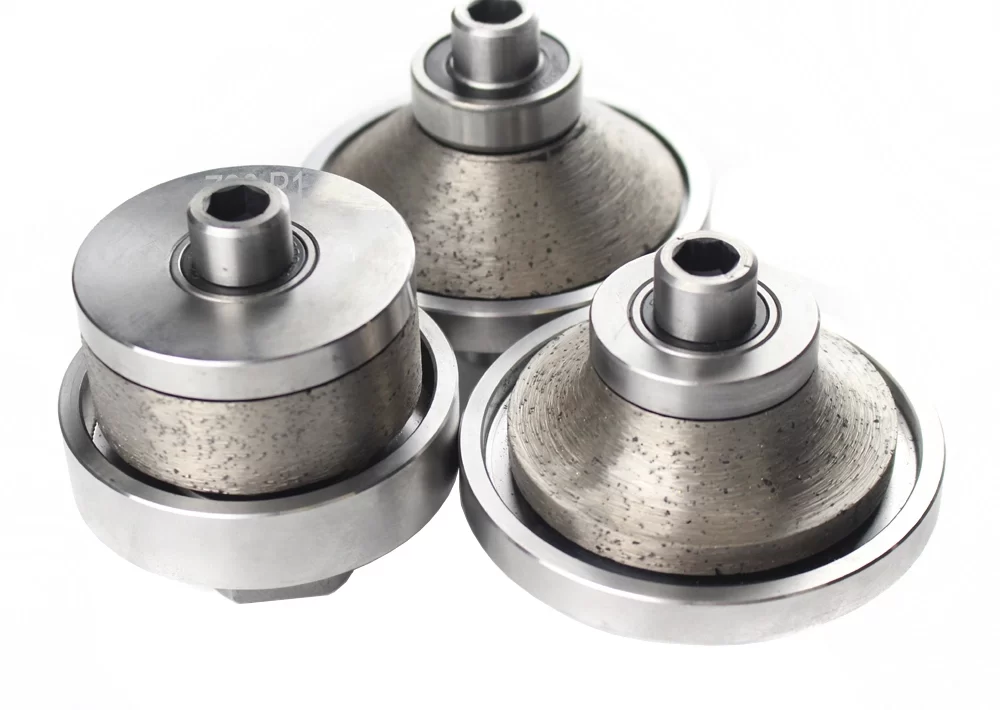Diamond router bits are essential tools for the fabrication of natural and engineered stone countertops, as well as other stone surfaces. These bits are used to cut, shape, and polish stone surfaces with precision and accuracy. Over the years, diamond router bits have evolved from manual tools to automated machines, making the fabrication process more efficient, faster, and safer. In this blog, we’ll take a look at the evolution of diamond router bits and how they have revolutionized the stone fabrication industry.
The Beginning of Diamond Router Bits
Diamond router bits have existed since the early 1950s when diamond saw blades were first developed. These early router bits were made by brazing diamond grit onto the end of a steel shank. The diamond grit would then cut into the stone surface, creating a smooth and precise cut. However, these early router bits were limited in their design capabilities and required a lot of skill and experience to operate effectively.
The Development of Diamond Finger Bit
In the early 1960s, the diamond finger bit was developed, a significant improvement over the early diamond router bits. The diamond finger bit consisted of a cylindrical shank with a diamond-impregnated tip. The shank was connected to a drill, and the bit was used to create holes or channels in the stone. The diamond finger bit was much more versatile than the early router bits and allowed for more complex designs to be created.
The Emergence of Granite Router Bit
In the 1980s, the demand for granite countertops and other stone surfaces increased dramatically, leading to the development of the granite router bit. The granite router bit was specifically designed to cut and shape granite, a dense and hard stone requiring a specialized bit. The granite router bit is similar to the diamond finger bit but has a wider base and is designed to work with automated machines.
The Advancement of Technology
In the 1990s, the introduction of CAD software and CNC machines revolutionized the stone industry. CAD software allowed designers to create complex designs that could be replicated with incredible accuracy. CNC machines could then use these designs to cut and shape the stone with precise and intricate details. Diamond router bits played a significant role in this advancement, as CNC machines could now be used to create complex designs quickly and accurately.
Automated Cutting and Shaping
Today, diamond router bits are essential to the automated cutting and shaping process. Automated machines use diamond router bits to create precise cuts and shapes in natural stone surfaces, such as countertops, floors, and walls. These machines can produce thousands of identical designs with incredible speed and accuracy.
Benefits of Automated Diamond Router Bits
Automated diamond router bits offer numerous benefits over manual methods of cutting and shaping natural stone methods. Some of these benefits include:
- Precision: Automated machines use CAD software to create designs that can be reproduced with incredible accuracy.
- Speed: Automated machines can produce thousands of identical designs in a fraction of the time it would take to do manually.
- Efficiency: Automated machines require less manual labor, reducing the cost and time associated with manual cutting and shaping.
- Safety: Automated machines reduce the risk of injury associated with manual cutting and shaping.
- Quality: Automated machines produce consistent, high-quality designs that meet or exceed industry standards.
Types of Diamond Router Bits
Diamond router bits come in a variety of shapes and sizes, each designed for specific cutting and shaping purposes. Some of the most common types of diamond router bits include:
- Straight Router Bit: This type of bit makes straight cuts on the stone’s surface.
- Bullnose Router Bit: This bit creates rounded edges on stone surfaces.
- Ogee Router Bit: The Ogee bit creates an S-shaped curve on stone edges.
- V-shaped Router Bit: This bit creates V-shaped grooves on the stone’s surface.
- Bevel Router Bit: This bit creates a sloping edge on the stone surface.
- Cove Router Bit: The Cove bit creates a concave curve on stone surfaces.
- Core Bit: This bit is used for drilling holes into the stone surface.
Each type of diamond router bit has its unique design and purpose, allowing for a wide range of designs to be created with precision and accuracy.
Conclusion
The evolution of diamond router bits has been a game-changer for the stone fabrication industry. These bits, from manual tools to automated machines, have made the cutting, shaping, and polishing process faster, more efficient, and safer. With the latest advancements in diamond finger bits and granite router bits, stone fabricators can achieve precise cuts, shapes, and finishes with ease.
If you’re in the market for diamond router bits or other stone fabrication tools, check out the range of products available at Tait Sales & Consulting LLC. With their extensive selection of high-quality diamond router bits, you will surely find the perfect tool for your needs. Upgrade your fabrication process today and take your stone fabrication business to the next level with StoneTooling.com.





